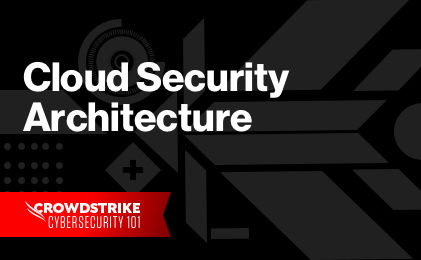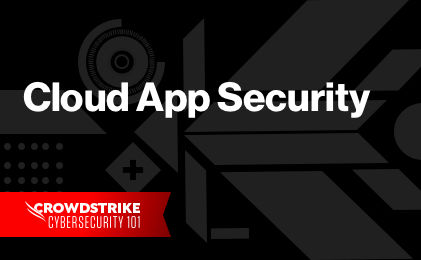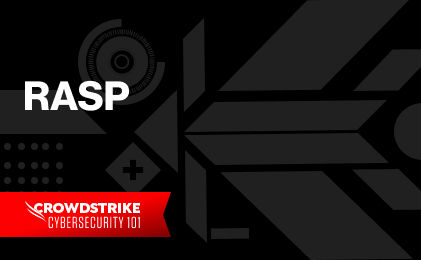Understand CNAPPs with Our Guide
Understand CNAPPs with Our Guide
What is Cloud Infrastructure Entitlement Management (CIEM)?
Cloud infrastructure entitlement management (CIEM) is a security process that helps security teams analyze and manage identities, access rights, privileges, and permissions in cloud environments. Its main goal is to mitigate the risk that comes from the unintentional and unchecked granting of excessive permissions to cloud resources.
CIEM offerings are specialized, identity-centric software as a service (SaaS) solutions focused on managing cloud access risk via administration time controls for the governance of entitlements in hybrid and multi-cloud infrastructure as a service (IaaS). Integrating CIEM into a holistic cloud-native application protection platform (CNAPP) helps prevent security silos for comprehensive security in cloud-native applications.
With CIEM security solutions, security teams can manage cloud identities, entitlements, and enforce the principle of least privilege (POLP) to cloud resources and infrastructure. This helps companies reduce their cloud attack surface and mitigate access risks posed by excessive permissions.
What are cloud infrastructure entitlements?
Cloud infrastructure entitlements comprise the various permissions granted to entities to access cloud resources. In a multi-cloud environment operating at the scale of thousands of resources, managing and keeping track of an enterprise’s cloud infrastructure entitlements is an incredibly complex task.
Cloud providers operate with a shared responsibility model. With IaaS offerings, the cloud provider makes available services and storage and guarantees the physical security of its data centers. However, the user of the IaaS offering is responsible for security, establishing who (or what) can and cannot access those infrastructure resources.

The Complete Guide to CNAPPs
Download CrowdStrike's Complete Guide to CNAPPs to understand why Cloud-Native Application Protection Platforms are a critical component of modern cloud security strategies and how to best integrate them to development lifecycles.
Download NowWhy is CIEM important for cloud security?
In an environment with static resources, cloud providers use identity and access management (IAM) rules to govern access. For example, any user with the deployments-manager role could have permission to reboot a certain compute instance (e.g., Amazon EC2). Meanwhile, a continuous integration/continuous delivery (CI/CD) pipeline with the automated-test-runner role might have permission to SSH into that instance to execute a test.
In today’s cloud environments, however, resources are ever-changing. Many resources are ephemeral, provisioned or deprovisioned based on the scaling needs of any given moment. Although cloud providers have solutions in place for granting permissions to ephemeral resources, each cloud provider has a unique way of doing so. This leaves enterprises with the challenge of managing and understanding permissions across multiple clouds.
As today’s enterprises transition more of their systems and business processes to the cloud, the challenge of governing and monitoring access to those resources grows increasingly complex. Cloud resources are no longer static and predictable. In addition, enterprises no longer operate in just one cloud — instead, they are adopting multi-cloud approaches to their infrastructure. Therefore, establishing proper permissions for accessing those resources is no longer straightforward. A solution that manages your cloud infrastructure entitlements does just that.
How does CIEM work?
CIEM allows security teams and organizations to use advanced techniques, including machine learning, to analyze effective access in cloud environments, monitor and right-size permissions, help detect accidental exposure and generate remediation recommendations.
This is done by applying the principle of least privilege, granting a user (or any entity) the minimum amount of permissions necessary to perform their role. With this approach, CIEM solutions start from a posture that avoids the dangers of excessive permissions.
CIEM also unifies security terminology and usage across all clouds, which reduces the need for teams to switch context on multiple cloud providers. Lastly, many CIEM solutions use machine learning to analyze access records and configurations to determine an enterprise’s potential access risks. Through this, a CIEM solution can help identify excessive entitlements and mitigate the risk of a security breach.

Falcon CIEM Capabilities Data Sheet
Download this solution Brief to learn more about how CrowdStrike Falcon® Cloud Security provides integrated cloud infrastructure entitlement management (CIEM) capabilities that deliver a single source of truth for monitoring, discovering and securing identities.
Download NowCore strategic components of CIEM
CIEM solutions all share the following core components:
- Identity and access management (IAM): Centralized access management with CIEM ensures only authorized users and applications have access to sensitive data and services. These policies and roles determine who in your organization can access cloud workloads; what files they can access; and when, where, and why they can access it.
- Principle of least privilege (POLP): Enforcing POLP with CIEM ensures users and applications only have the minimum level of access needed to perform their tasks. By enforcing POLP to minimize access rights, organizations can reduce their risk of data breaches and unauthorized access.
- Visibility, auditing and remediation: CIEM enables visibility into user activity across all cloud environments and can detect suspicious or abnormal behavior. This is often done via user entity behavior analytics (UEBA) or machine learning. Security teams can use generated recommendations and remediation steps to reduce access and revoke unused permissions.
- Centralized management: A dashboard is used to provide centralized visibility and cloud entitlement management. This control center allows your IT system to seamlessly manage multi-cloud environments.
- Identity governance: Identity governance mitigates entitlement risk by specifying which entitlements apply to each cloud entity, whether human or non-human.
- Compliance: Enhanced access and control from CIEM visibility, control and auditing helps security teams and organizations comply with security regulations including GDPR, HIPAA and CCPA
Key CIEM security benefits
Managing and monitoring access to cloud resources presents several challenges. CIEM steps in by providing the following benefits:
Improved identity and access management
In today’s cloud environments, people or processes might provision or deprovision resources at any given moment. Managing access to those resources requires a dynamic approach that CIEM solutions provide. Monitoring access to those ephemeral resources is similarly complex.
Optimized access to cloud resources
With a manual or careless approach to permissions, many enterprises err on the side of granting access in a manner that is too coarse. Consider the example of attaching IAM policies to a new member of the engineering team. Perhaps to avoid blocking the new member from performing tasks or to prevent the new member from repeatedly needing to ask for more permissions, the enterprise errs on giving that member excessive permissions to perform all sorts of actions — including actions not related to their tasks or responsibilities.
This granting of excessive permissions significantly raises the risk of a security breach. CIEM solutions make it easy for IT teams to provide only the necessary permissions for each user to operate efficiently.
Improved multicloud entitlement visibility
Cloud infrastructure access is not as simple as users accessing resources. Resources that may need to be accessed include:
- Virtual machines
- Containers
- Serverless functions
- Databases
- Persistent storage
- Applications
- And more
Meanwhile, the entities that need to access these resources may include:
- Users
- Internet of things (IoT) devices
- Other serverless functions
- Other applications
- Other cloud accounts
In an environment with hundreds of resources or more — coupled with potentially hundreds or thousands of entities requiring access to some resources but not others — the need for clarity in access management is tremendous. CIEM provides centralized visibility into all cloud entitlements, which improves identity management and helps prevent identity-based attacks.
Reduced complexity and improved security posture
Many enterprises adopt a multi-cloud approach, choosing to host their resources in different clouds because of cost, availability, or other factors. AWS, Azure, and GCP each have different approaches to IAM, as does every other cloud provider. This leaves enterprises without a single, unified approach to managing permissions across all of their cloud resources. With a CIEM solution, IT teams can easily manage entitlements across multi-cloud environments.
Compliance and audit readiness
CIEM security solutions constantly ensure sensitive data within the cloud is managed with care and in a compliant manner through the automation of identity access management across multi-cloud environments. Many solutions follow cloud security frameworks put in place by local governments or industry regulators.
Automatic detection and remediation
CIEM solutions are designed to reduce your attack surfaces and minimize risk by keeping an inventory of all cloud entitlements, automatically remediating misconfigured entitlements, enforcing least privilege access, and implementing congruent guardrails.

2024 Threat Hunting Report
In the CrowdStrike 2024 Threat Hunting Report, CrowdStrike unveils the latest tactics of 245+ modern adversaries and shows how these adversaries continue to evolve and emulate legitimate user behavior. Get insights to help stop breaches here.
Download NowCIEM tool considerations
When choosing a CIEM tool for your organization, it’s crucial to consider various factors. Here’s a handy list of considerations:
| Capability | Requirement |
|---|---|
| Seamless integration | Test drive the CIEM tool during an evaluation period to ensure it seamlessly integrates with your existing cloud infrastructure and management systems. |
| User-friendly interface | The user interface should be intuitive and easy to navigate for administrators and users alike. |
| Granular policy control | Look for a tool that allows you to define and manage access at a granular level, including roles, permissions, and entitlements. |
| Scalability | Consider whether the tool can grow with your organization's needs without compromising performance. |
| Compliance logging | Confirm that the CIEM tool offers features for compliance monitoring, reporting, and auditing. |
| Automation | Ensuring the solution has robust automation capabilities can reduce your admin burden of managing entitlements. |
| Security | Prioritize a CIEM tool with robust security features, including multi-factor authentication and threat detection. |
| Cost efficiency | Evaluate the cost of the CIEM tool in relation to the value it provides, considering your organization's budget. |
| Vendor reputation | Research the vendor's reputation, taking a look at customer reviews, analyst reports, awards, and support services. |
| Consolidation | Explore whether the vendor provides a comprehensive security portfolio that goes beyond CIEM alone. Having your CIEM solution integrated into a comprehensive security suite can support vendor consolidation and enhance your overall security posture. |
By carefully considering these factors, you can choose the CIEM tool that best aligns with your organization’s security and entitlement management needs.
CrowdStrike Falcon Cloud Security’s approach
The traditional IAM approach in static cloud environments is insufficient when applied to today’s dynamic, multi-cloud environments. In addition, a manual approach applied at the scale of today’s environments — with potentially thousands of resources and even more entities needing access to those resources — is untenable and results in unintentionally excessive permissions, leading to a high risk of a security breach. That’s where a strong CIEM solution comes into play.
CrowdStrike Falcon® Cloud Security offers unrivaled identity-based security, visibility, and least privilege access enforcements across multi-cloud environments. It serves as a single source of truth for identity security and integrated CIEM monitoring. Additionally, with CrowdStrike’s threat intelligence capabilities, you can get access to information about a plethora of adversaries threatening your cloud environments.
Learn More
Learn about CrowdStrike’s cloud security approach for access management and security posture with Falcon Cloud Security.





